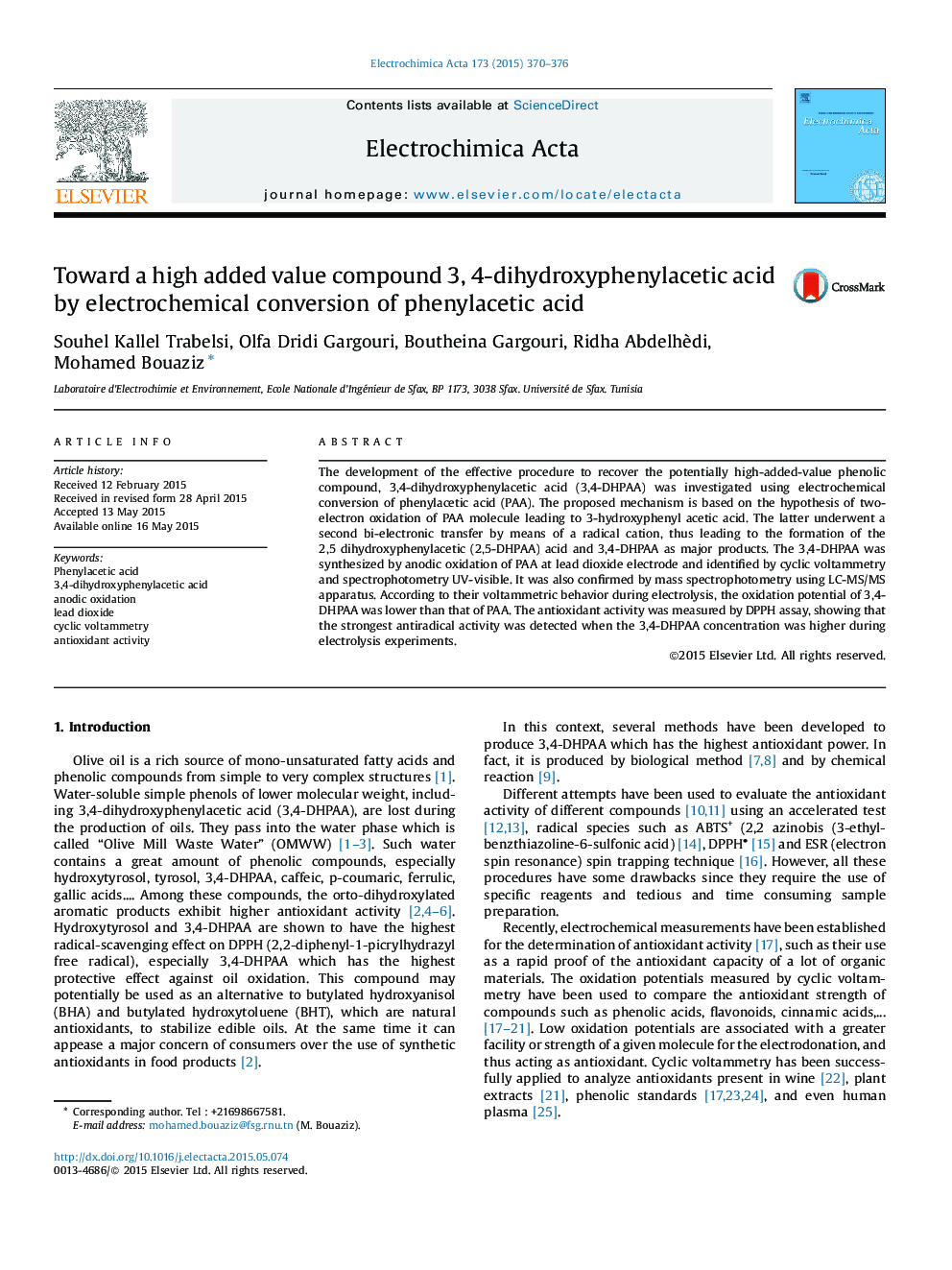| Article ID | Journal | Published Year | Pages | File Type |
|---|---|---|---|---|
| 183797 | Electrochimica Acta | 2015 | 7 Pages |
The development of the effective procedure to recover the potentially high-added-value phenolic compound, 3,4-dihydroxyphenylacetic acid (3,4-DHPAA) was investigated using electrochemical conversion of phenylacetic acid (PAA). The proposed mechanism is based on the hypothesis of two-electron oxidation of PAA molecule leading to 3-hydroxyphenyl acetic acid. The latter underwent a second bi-electronic transfer by means of a radical cation, thus leading to the formation of the 2,5 dihydroxyphenylacetic (2,5-DHPAA) acid and 3,4-DHPAA as major products. The 3,4-DHPAA was synthesized by anodic oxidation of PAA at lead dioxide electrode and identified by cyclic voltammetry and spectrophotometry UV-visible. It was also confirmed by mass spectrophotometry using LC-MS/MS apparatus. According to their voltammetric behavior during electrolysis, the oxidation potential of 3,4-DHPAA was lower than that of PAA. The antioxidant activity was measured by DPPH assay, showing that the strongest antiradical activity was detected when the 3,4-DHPAA concentration was higher during electrolysis experiments.
